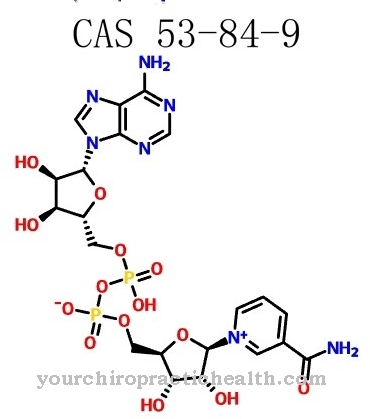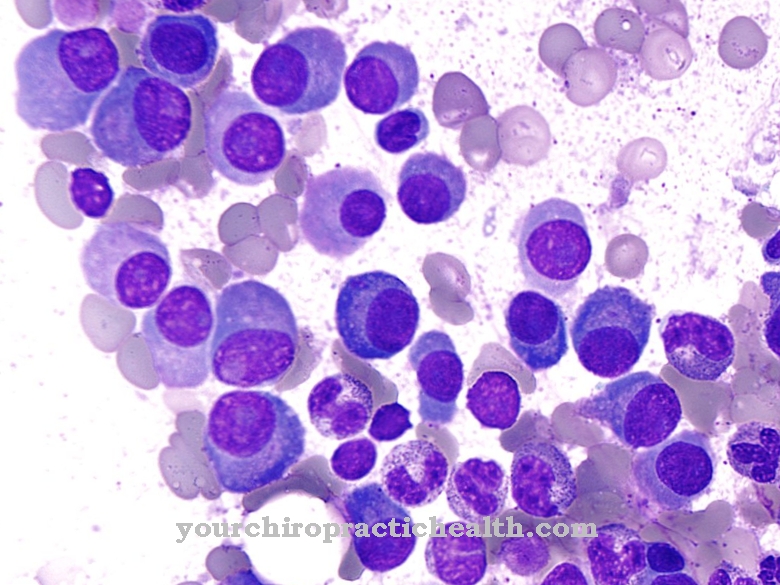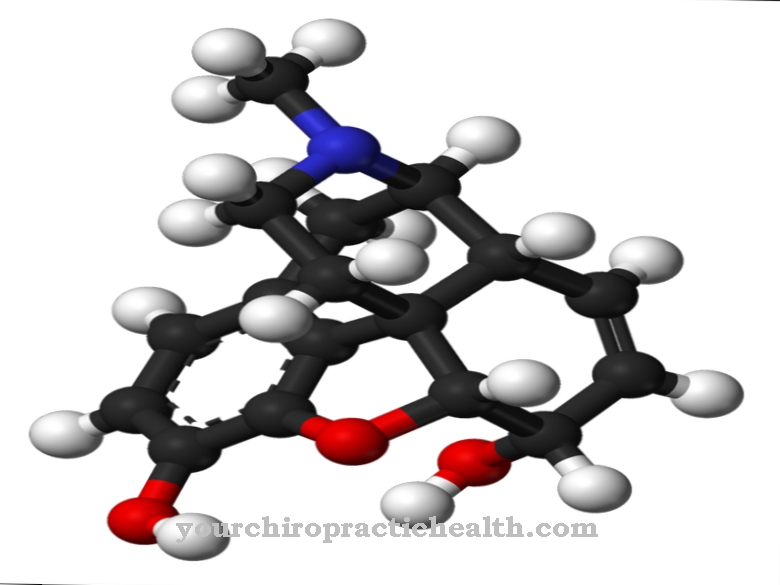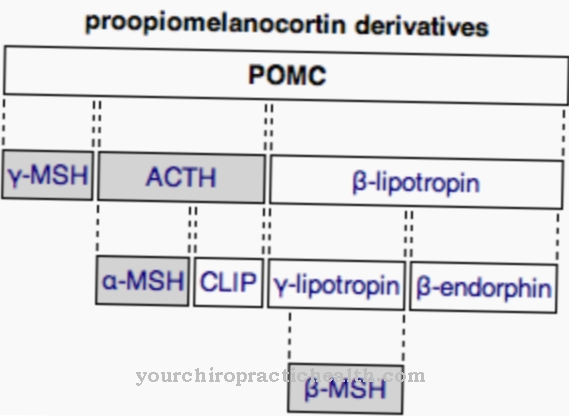Hypoxanthine In addition to xanthine, it is a breakdown product from the purine metabolism. It is further broken down into uric acid. Diseases can occur both when its degradation to uric acid is inhibited and when its recycling via the salvage pathway is disturbed.
What is hypoxanthine?
Hypoxanthine is a purine derivative and is produced when the purine bases adenine and guanine are broken down. Along with xanthine, it is an intermediate in the synthesis of uric acid. Under the influence of xanthine oxidase, hypoxanthine is usually first broken down into xanthine and then into uric acid.
Like all purine derivatives, it consists of two heterocyclic rings containing six or five atoms. There are a total of nine atoms in the rings. There are five carbon and four nitrogen atoms. Two carbon atoms belong to both rings. A hydroxyl group is bonded to the carbon atom at position 6. Via stabilization effects, the molecule can exist in several tautomeric forms that are in equilibrium with one another. Hypoxanthine is made up of solid transparent crystals that melt at 250 degrees. It doesn't dissolve in cold water or alcohol. However, it is easily soluble in hot water, acids or alkalis.
Function, effect & tasks
As mentioned, hypoxanthine is an intermediate product in the breakdown of the purine bases. The enzyme xanthine oxidase oxidizes it to xanthine. Together with xanthine, it is then broken down into uric acid with the help of xanthine oxidase. The difference between hypoxanthine and xanthine is that xanthine also has a hydroxyl group attached to position 2.
Furthermore, hypoxanthine can both be broken down into uric acid and fed back into the purine metabolism via the salvage pathway.In contrast, xanthine only breaks down into uric acid. Hypoxanthine and ribose form the nucleoside inosine. Inosine is incorporated into the anticodon of the tRNA in very rare cases. It is used in the production of degenerate primers that initiate a polymerase chain reaction. It is a neutral base that can pair with all nucleobases. However, pairing with cytosine is energetically the best.
Another important compound derived from hypoxanthine is inosine monophosphate. This compound is a phosphoric acid ester of inosine. Inosine monophosphate (IMP) is a key intermediate for the synthesis of guanosine monophosphate (GMP) and adenosine monophosphate (AMP), both of which can be used again for nucleic acid synthesis. The synthesis of IMP takes place from hypoxanthine directly via the salvage pathway. The two enzymes AICAR formyltransferase / IMP cyclase and hypoxanthine guanine phosphoribosyltransferase are largely responsible for this. Thus, hypoxanthine stands at the interface between the breakdown of the purine bases to form uric acid and the build-up of nucleic acids. Inosine monophosphate is also used as a flavor enhancer.
Education, occurrence, properties & optimal values
Hypoxanthine is formed as an intermediate product in the purine metabolism and is on the threshold between the breakdown and rebuilding of the purine bases. If it is oxidized into xanthine by the enzyme xanthine oxidase, the reverse reaction to the nucleobases adenine and guanine is no longer possible.
Hypoxanthine is produced from the purine base adenine, while the breakdown of guanine leads to xanthine. However, the reactions of the various nucleosides and nucleotides are linked to one another via a complicated network. Adenosine nucleotides lead directly to hypoxanthine, with AMP as the key substance. However, GMP can also be converted into AMP via IMP and adenylosuccinate. AMP then leads to hypoxanthine via the formation of adenosine and inosine, among other things. In addition to guanine and adenine, hypoxanthine can then also produce nucleotides as nucleic acid building blocks via the salvage pathway.
You can find your medication here
➔ Medicines for bladder and urinary tract healthDiseases & Disorders
Several disorders can arise in connection with hypoxanthine. When purine is broken down, hypoxanthine and xanthine are produced equally. Hypoxanthine is converted into xanthine by xanthine oxidase. The same enzyme then breaks down xanthine into uric acid.
However, when xanthine oxidase is absent, xanthine and hypoxanthine accumulate in the blood. The uric acid levels are very low. However, it is mainly the concentration of xanthine that increases, because hypoxanthine has the option of being recycled via the salvage pathway. The clinical picture of xanthinuria develops. The excretion of xanthine in the urine can increase by 1500 percent. The values of hypoxanthine do not increase by far as much. The high concentrations of xanthine can damage the kidneys. If the fluid intake is poor, kidney stones or stones in the urinary tract can form. The excretion of urine crystals is also possible.
In very severe cases, it can lead to fatal kidney failure. However, since xanthine and hypoxanthine have a certain degree of water solubility, the best therapy is to drink a lot. Purine-rich foods such as fish, mussels, legumes or beer should be avoided. However, there are also more severe forms of xanthinuria. In addition to severe kidney diseases, this can lead to delayed intellectual development, autism or even tooth development disorders. Since hypoxanthine can also be recycled via the salvage pathway, unlike xanthine, the disruptions within this process lead to increased uric acid formation, because only the purine base breakdown pathway works.
The resulting hypoxanthine can only be oxidized into xanthine, which in turn is converted into uric acid. Often there is a hereditary defect in the enzyme hypoxanthine guanine phosphoribosyl transferase. The uric acid concentration in the blood rises sharply, which can lead to precipitation of uric acid crystals in the joints. The result are gout attacks. In severe cases, Lesch-Nyham syndrome develops.
























.jpg)



